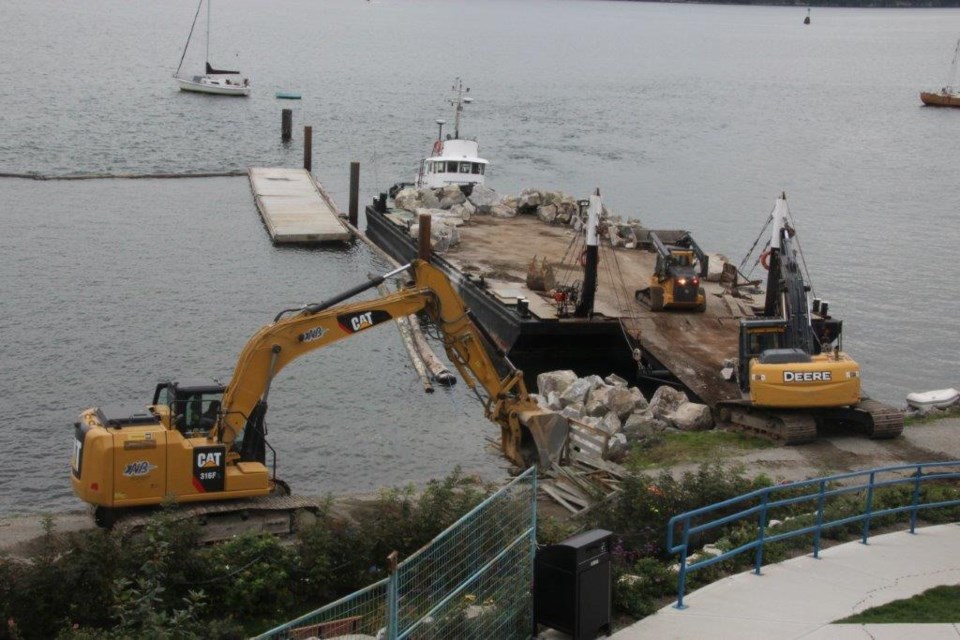Access to the beach and the seawalk between Armours Beach and Coles Marine was expected to be limited until Oct. 16 because of work to improve the foreshore to better protect the sewer infrastructure that runs under the path.
The $308,000 project was approved by Gibsons council over the summer, but the Town had to wait to start until the Department of Fisheries and Oceans annual window for shoreline work, which is designed to protect fish habitat.
The work includes reconstruction of a retaining wall at Armours Beach, the infill of a short section of the seawalk fronting the old Coles Marine site at 524 Marine Drive, and repairs to the 2018 storm damage at Georgia Beach, Franklin Beach and Pebbles Beach.
The Town was granted about $53,000 in Disaster Financial Assistance from the province for some of the work at Pebbles and Georgia beaches.
As well as the foreshore work, the Town has also been repairing the storm damage to the swimming area at Armours Beach as part of a $69,000 job that included replacing all the pilings.
The full Amours Beach improvement project has been budgeted at $124,000, and dock upgrades and other work will be considered by council in 2020.
The foreshore work comes as a Gibsons resident, engineer John Roper, is urging the Town to take action now “to plan, design and build upgrades of public and private facilities with structural and mechanical capacities for a sea level of 7.0 metres.”
Roper submitted a 24-page report to the Town in late September, which he said was prepared as a “voluntary committee service.”
The report tracks the predicted impact of climate change and observations of extremely high tides and storm surges drawn from reports Roper has been sending to the Town over the course of the past 13 years.
“An expected one metre rise in sea level coupled with the current range of high tides and seasonal progression of low pressure weather systems over Gibsons will damage shoreline public infrastructure and private property unless measures are designed and implemented for adaptation to a higher seawater level,” Roper’s report says.
Roper also cites a 2013 report done for the Town by the C-Change project led by researchers at the University of Ottawa that predicted the Town could face $5 million in property damages by 2100 as a result of climate change impacts on the waters of Howe Sound and the Salish Sea.
According to Roper, “the expectation of sea level rise and value of potential damages now appear to have been substantially understated.”



